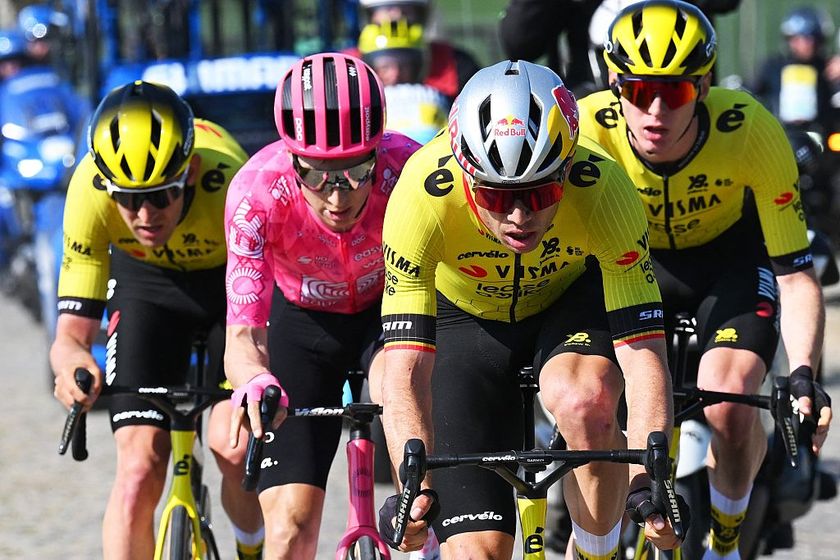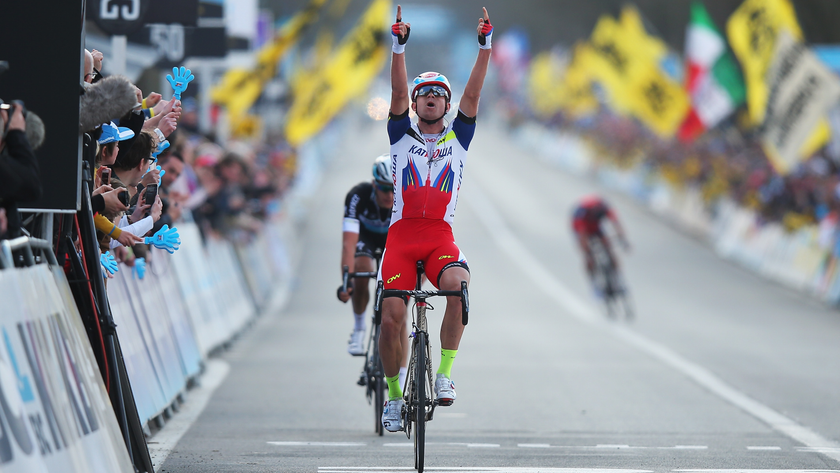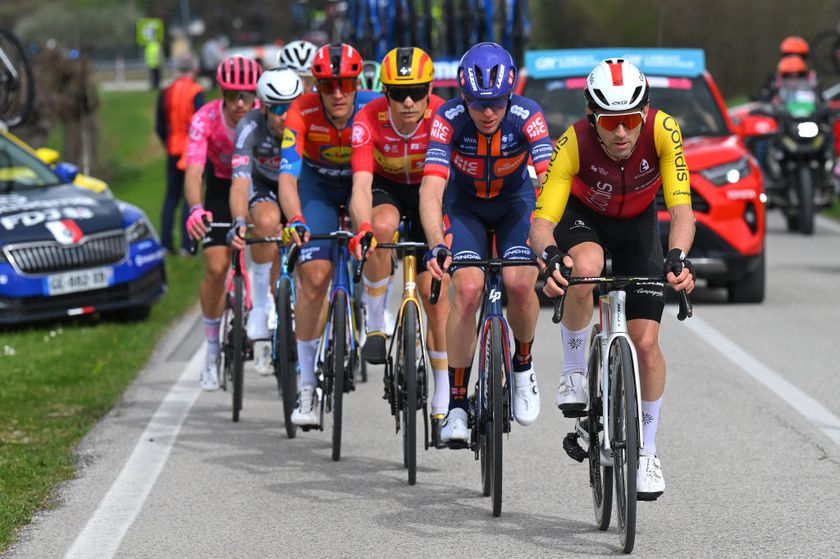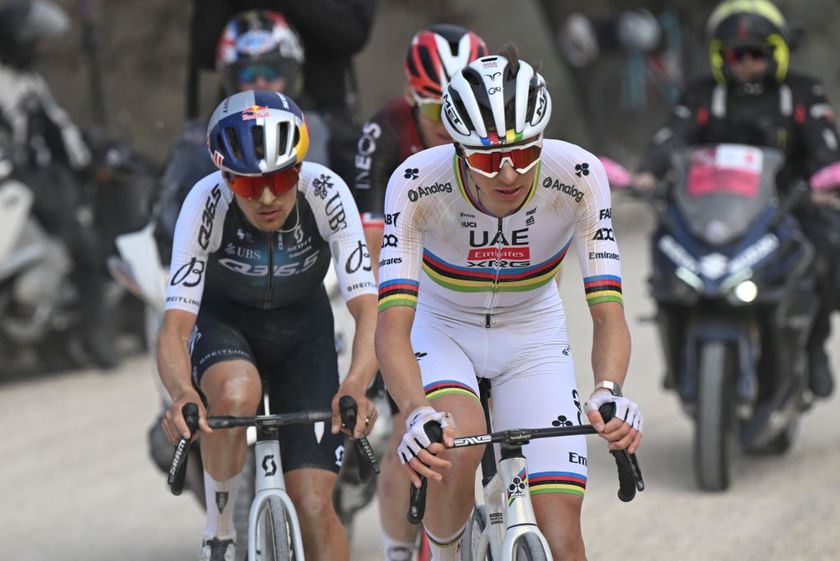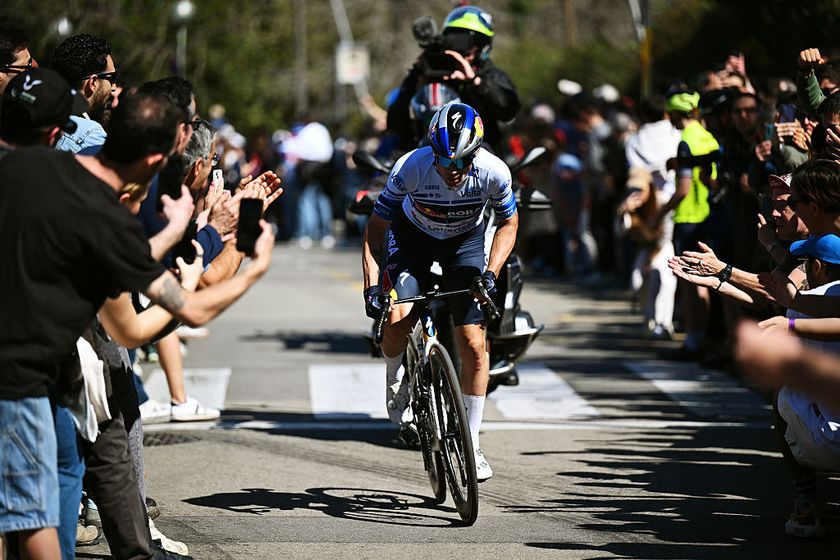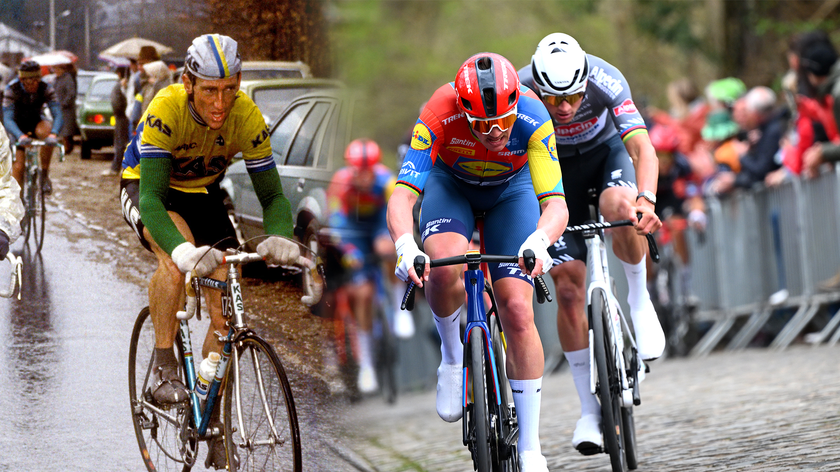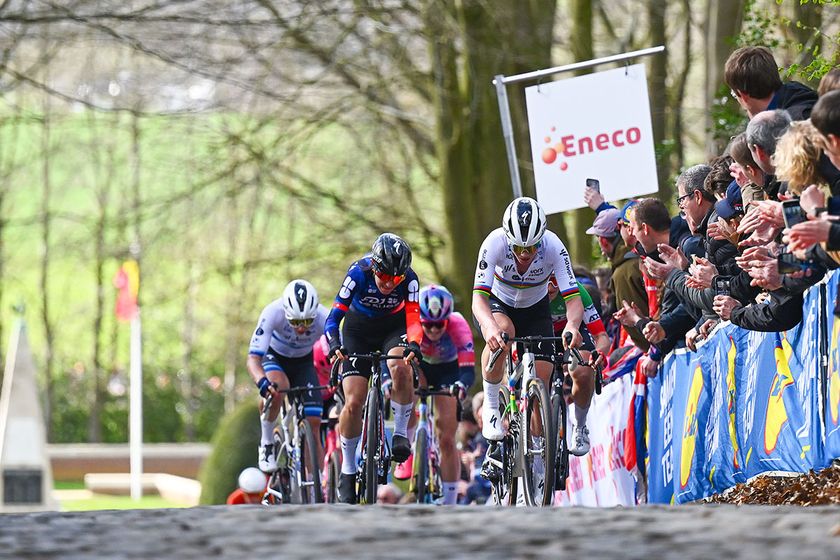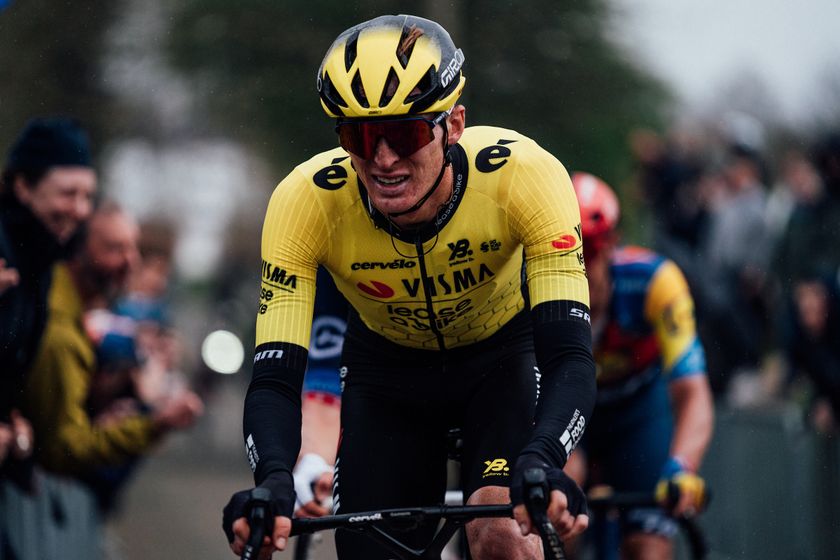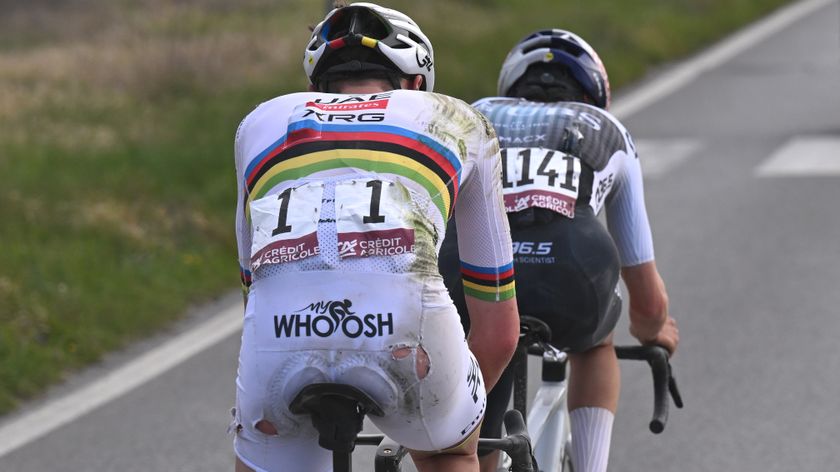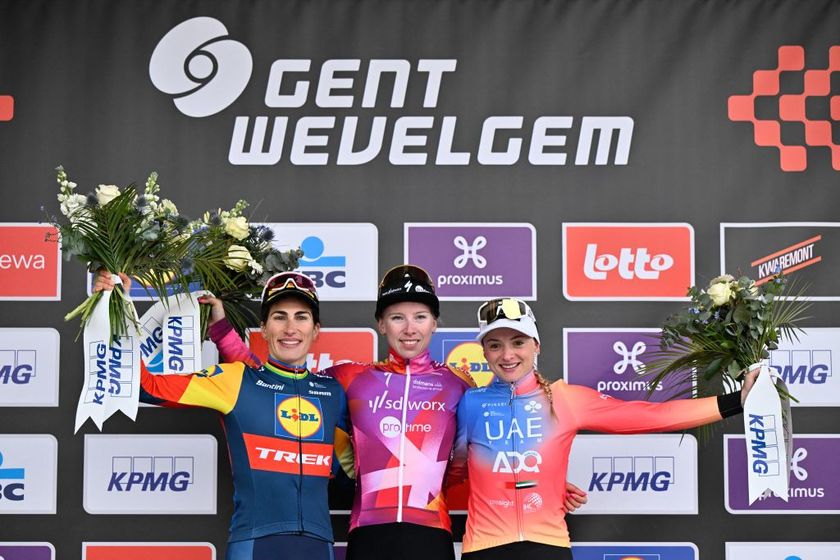Fitness questions and answers for June 10, 2008
Got a question about fitness, training, recovery from injury or a related subject? Drop us a line at...
Form & Fitness Q & A
Got a question about fitness, training, recovery from injury or a related subject? Drop us a line at fitness@cyclingnews.com. Please include as much information about yourself as possible, including your age, sex, and type of racing or riding. Due to the volume of questions we receive, we regret that we are unable to answer them all.
Carrie Cheadle, MA (www.carriecheadle.com) is a Sports Psychology consultant who has dedicated her career to helping athletes of all ages and abilities perform to their potential. Carrie specialises in working with cyclists, in disciplines ranging from track racing to mountain biking. She holds a bachelors degree in Psychology from Sonoma State University as well as a masters degree in Sport Psychology from John F. Kennedy University.
Jon Heidemann (www.peaktopeaktraining.com) is a USAC Elite Certified cycling coach with a BA in Health Sciences from the University of Wyoming. The 2001 Masters National Road Champion has competed at the Elite level nationally and internationally for over 14 years. As co-owner of Peak to Peak Training Systems, Jon has helped athletes of all ages earn over 84 podium medals at National & World Championship events during the past 8 years.
Dave Palese (www.davepalese.com) is a USA Cycling licensed coach and masters' class road racer with 16 years' race experience. He coaches racers and riders of all abilities from his home in southern Maine, USA, where he lives with his wife Sheryl, daughter Molly, and two cats, Miranda and Mu-Mu.
Kelby Bethards, MD received a Bachelor of Science in Electrical Engineering from Iowa State University (1994) before obtaining an M.D. from the University of Iowa College of Medicine in 2000. Has been a racing cyclist 'on and off' for 20 years, and when time allows, he races Cat 3 and 35+. He is a team physician for two local Ft Collins, CO, teams, and currently works Family Practice in multiple settings: rural, urgent care, inpatient and the like.
Fiona Lockhart (www.trainright.com) is a USA Cycling Expert Coach, and holds certifications from USA Weightlifting (Sports Performance Coach), the National Strength and Conditioning Association (Certified Strength and Conditioning Coach), and the National Academy for Sports Nutrition (Primary Sports Nutritionist). She is the Sports Science Editor for Carmichael Training Systems, and has been working in the strength and conditioning and endurance sports fields for over 10 years; she's also a competitive mountain biker.
Eddie Monnier (www.velo-fit.com) is a USA Cycling certified Elite Coach and a Category II racer. He holds undergraduate degrees in anthropology (with departmental honors) and philosophy from Emory University and an MBA from The Wharton School of Business.
Get The Leadout Newsletter
The latest race content, interviews, features, reviews and expert buying guides, direct to your inbox!
Eddie is a proponent of training with power. He coaches cyclists (track, road and mountain bike) of all abilities and with wide ranging goals (with and without power meters). He uses internet tools to coach riders from any geography.
David Fleckenstein, MPT (www.physiopt.com) is a physical therapist practicing in Boise, ID. His clients have included World and U.S. champions, Olympic athletes and numerous professional athletes. He received his B.S. in Biology/Genetics from Penn State and his Master's degree in Physical Therapy from Emory University. He specializes in manual medicine treatment and specific retraining of spine and joint stabilization musculature. He is a former Cat I road racer and Expert mountain biker.
Since 1986 Steve Hogg (www.cyclefitcentre.com) has owned and operated Pedal Pushers, a cycle shop specialising in rider positioning and custom bicycles. In that time he has positioned riders from all cycling disciplines and of all levels of ability with every concievable cycling problem. Clients range from recreational riders and riders with disabilities to World and National champions.
Current riders that Steve has positioned include Davitamon-Lotto's Nick Gates, Discovery's Hayden Roulston, National Road Series champion, Jessica Ridder and National and State Time Trial champion, Peter Milostic.
Pamela Hinton has a bachelor's degree in Molecular Biology and a doctoral degree in Nutritional Sciences, both from the University of Wisconsin-Madison. She did postdoctoral training at Cornell University and is now an assistant professor of Nutritional Sciences at the University of Missouri-Columbia where she studies the effects of iron deficiency on adaptations to endurance training and the consequences of exercise-associated changes in menstrual function on bone health.
Pam was an All-American in track while at the UW. She started cycling competitively in 2003 and is the defending Missouri State Road Champion. Pam writes a nutrition column for Giana Roberge's Team Speed Queen Newsletter.
Dario Fredrick (www.wholeathlete.com) is an exercise physiologist and head coach for Whole Athlete™. He is a former category 1 & semi-pro MTB racer. Dario holds a masters degree in exercise science and a bachelors in sport psychology.
Scott Saifer (www.wenzelcoaching.com) has a Masters Degree in exercise physiology and sports psychology and has personally coached over 300 athletes of all levels in his 10 years of coaching with Wenzel Coaching.
Kendra Wenzel (www.wenzelcoaching.com) is a head coach with Wenzel Coaching with 17 years of racing and coaching experience and is coauthor of the book Bike Racing 101.
Steve Owens (www.coloradopremiertraining.com) is a USA Cycling certified coach, exercise physiologist and owner of Colorado Premier Training. Steve has worked with both the United States Olympic Committee and Guatemalan Olympic Committee as an Exercise Physiologist. He holds a B.S. in Exercise & Sports Science and currently works with multiple national champions, professionals and World Cup level cyclists.
Through his highly customized online training format, Steve and his handpicked team of coaches at Colorado Premier Training work with cyclists and multisport athletes around the world.
Brett Aitken (www.cycle2max.com) is a Sydney Olympic gold medalist. Born in Adelaide, Australia in 1971, Brett got into cycling through the cult sport of cycle speedway before crossing over into road and track racing. Since winning Olympic gold in the Madison with Scott McGrory, Brett has been working on his coaching business and his www.cycle2max.com website.
Richard Stern (www.cyclecoach.com) is Head Coach of Richard Stern Training, a Level 3 Coach with the Association of British Cycling Coaches, a Sports Scientist, and a writer. He has been professionally coaching cyclists and triathletes since 1998 at all levels from professional to recreational. He is a leading expert in coaching with power output and all power meters. Richard has been a competitive cyclist for 20 years
Andy Bloomer (www.cyclecoach.com) is an Associate Coach and sport scientist with Richard Stern Training. He is a member of the Association of British Cycling Coaches (ABCC) and a member of the British Association of Sport and Exercise Sciences (BASES). In his role as Exercise Physiologist at Staffordshire University Sports Performance Centre, he has conducted physiological testing and offered training and coaching advice to athletes from all sports for the past 4 years. Andy has been a competitive cyclist for many years.
Michael Smartt (www.wholeathlete.com) is an Associate Coach with Whole Athlete™. He holds a Masters degree in exercise physiology, is a USA Cycling Level I (Elite) Coach and is certified by the NSCA (Certified Strength and Conditioning Specialist). Michael has more than 10 years competitive experience, primarily on the road, but also in cross and mountain biking. He is currently focused on coaching road cyclists from Jr. to elite levels, but also advises triathletes and Paralympians. Michael is a strong advocate of training with power and has over 5 years experience with the use and analysis of power meters. Michael also spent the 2007 season as the Team Coach for the Value Act Capital Women's Cycling Team.
Advice presented in Cyclingnews' fitness pages is provided for educational purposes only and is not intended to be specific advice for individual athletes. If you follow the educational information found on Cyclingnews, you do so at your own risk. You should consult with your physician before beginning any exercise program.
Club foot
Knee soreness
Affects of antibiotics (Minocycline) on performance
Objective measures for injury prevention and improving performance
New shoes lower seat height?
Bike position question
Racing in the heat
Club foot
I was born with 'club foot' (congenital talipes equinovarus) syndrome in both feet. From the tender age of 3 days until fairly recently I have had numerous surgeries to help alleviate a variety of repercussions from the original problem, in common with other correspondents.
I am ~5ft 10in in height but have only size 6-7 feet and I have little flexion in either ankle. In addition to this, because my lower legs (and therefore feet) 'turn in', I suffered a serious left-knee injury as a youth when fast bowling playing cricket (hey - I was good...). This resulted in a further number of repair and corrective surgeries which has ultimately left me with a lower left leg shorter than the right by some 2cm.
I have also had a couple of cartilage corrections in both knees. I have a damaged lower spine due to a lifetime of heavy work moving things in the wrong way because I cannot use my feet and knees in the 'correct' way. This has meant a lot of lifting using my lower-back, rather than my upper thighs.
Today I am 52, weigh ~185 lbs (too much - I know...) and cycle for pure fun on road bikes. I tend to do short 20-25 mile rides at speed, rather than slower, longer spins. What I want to stress is that I ride with simple SPD cleats, nothing high end and, strangely, I do not suffer from back pain after riding, or any other form of leg pains and I would like to suggest that this may be due to the way my legs and feet are working on my bikes.
My lower legs and feet tend to 'turn in' in a similar way to how the hands naturally want to address a computer keyboard. Setting up the cleats in my shoes so that my lower legs and feet line up alongside the front-back axis of the bike is impossible and WOULD give me grief.
The simple cheap SPD system I use allows quite a degree of lateral movement in both the setting up in the shoe (allowing a degree of 'turn-in when placed over the pedal) and subsequently when pedalling (movement of the foot when locked in on the pedal itself). This allows my legs/knees to move comfortably with no strain. I am aware that it means that I am not using optimum power to weight ratios through the accepted alignment of feet and knees but so be it if it means no pain and continued cycling.
This also allows me to pedal with my knees close to the bar, rather than sticking out. I do no more adjustment than this based on the 'if it ain't broke, don't fix it' basis.
If other readers have any degree of club-foot problem then I hope this is of use. Cheap SPDs may not be super-cool in a crowd but they work.
Dr Malc Inman
Wolverhampton
Scott Saifer replies:
I'm glad to hear that you have found a pedaling system and adjustment that works for you. In fact your discovery that allowing the feet to take their natural alignment works better than trying to force them parallel to the bike is no surprise.
Knee soreness
I am a 50 something experienced and fit cyclist who rides hard (21 mph average) about 25 mi. four times a week.
I rode a 50 mi. organized ride last weekend with 20 miles of the course uphill and into a strong headwind. Now my right knee is sore. The pain is on the exterior area around and below the knee/bone area.
I ride Sidi Genius shoes, Look RS 5.1 pedals and my saddle height is correct. I noticed that my right cleat/pedal has more play in it than the left. I plan to do much more climbing and don't want this condition to persist. Can you tell me generally what causes pain in this area of the knee and if I need to, tighten my pedal/cleat lateral play, realign my cleat, or perhaps consider some type of shoe insert; - or other remedy?
Gary
Colorado
Steve Hogg replies:
So I assume you don't routinely have problems of this type so it probably means checking the simple things first. You say "my right cleat/pedal has more play in it than the left". Both pedals have the same degree of rotational movement so the likely cause of this feeling of "play" is either a damaged pedal or a worn cleat. Do you habitually take your right foot out when you stop at traffic lights, stop signs and so on?
Affects of antibiotics (Minocycline) on performance
I am a 34 year old Male Cat 3 road racer I'm 5'10 and weigh 161lbs. I have heard conflicting reports on what types of antibiotics will affect performance. I was hoping you could tell me if Minocycline will have a negative affect on performance OR recovery.
Unfortunately I am cursed with acne issues all my life. 2 years ago I went on accutane and that fixed me for a good while. I didn't like being on Accutane but I was really done with looking like a teenager all the time. Recently it came back and it seems with vengeance so my doctor said the only other choice is Differan and Minocycline.
I did not want to go on Accutane during the season because of what it does to the liver and I do remember being very tired. I am struggling this season especially climbing late in a road race where previously I didn't. It may not be the medication but I would like to rule it out.
Kelby Bethards replies:
You are correct about Accutane, it is a very potent medicine. However, with the Differin and Minocycline, I do not think you should have any worries about it changing your performance.
Objective measures for injury prevention and improving performance
I am a physiotherapist and a keen amateur cyclist. Locally, one of our bike shop owners has started to sponsor a few riders and put a squad together for regional and state races. I have discussed having an input with them (as a physiotherapist, not a rider) in terms of screening for injury prevention and enhancing performance. I would liken this to how throwing sports screen for ROM and strength in external shoulder rotation or how swimmers are similarly tested for ROM and power in internal shoulder rotation.
My question is: Can you suggest any objective measures that are commonly used in cycling with regards to screening for injury prevention and enhancing performance. My background as a physio is not one of working with elite level sporting people, thus I am a bit limited in my ideas.
At present some measures we have spoken about include: slump tests/straight leg raises (and other neurodynamic measures), balance, proprioception, hamstring length, comparison of quads strength (dominant vs non dominant sides), spirometry (specifically related to those with exercise induced asthma).
We are in the preliminary stages so nothing is set in stone yet. Thus I am just chasing ideas at present. All thoughts would be appreciated.
Tim
Newcastle
Scott Saifer replies:
Pain while riding is a good, objective indicator of biomechanical problems in a cyclist. You can take a perfectly healthy, flexible balanced athlete and induce injuries by having him or her ride with a poorly fitted bike, so I'd suggest looking at bike fit if you want to protect your riders from injury. Here's a short and incomplete list of common injuries that result from poor fit and the most common fit-related causes. Unfortunately you'd have to make yourself a fitting expert or hire one to avoid them all:
Low back pain - Bars too low, or too far away or saddle too high Pain below scapulae - Bars too wide Pain in upper trapezius and back of neck - bars too low Knee pain: frontal - inadequate extension on knee Medial and lateral knee pain - cleat angle, need for arch support or wedging, seat too high Pain behind knee - excessive extension of that leg Numb hands - too much weight on hands, seat to far forward Numb genitals - seat nose too low (usually) or too high (sometimes)
New shoes lower seat height?
I recently upgraded my road cycling shoes from Shimano's R215 to a new pair of custom footbed Rocket7s. I realize that the stack height of the rocket7s "looks" lower than that of my previous Shimano's. I have not lowered my seat height as of yet and honestly do not feel like I need to lower the saddle, but recently I have been feeling a faint twinge in my knees so I am naturally a bit worried. Any insight you can provide will be appreciated.
Steve Hogg replies:
Rocket 7's do have a thinner sole than Shimano 215's, They also have cleat mounting holes that are further forward on the shoe than the Shimano's. That may explain why you don't feel the need to drop the seat. The further forward cleat position is allowing you to reach a bit further and counteracts the shoe sole thickness difference. Cleat position plays a large part in muscle enlistment patterns of the leg, particularly the lower leg.
Bike position question
Hi, I am writing with a question for Steve Hogg. I am a 27 year old male triathlete, 6'5'', 190 lbs. I got into triathlon eight years ago from a swimming and running background. For a while everything with my cycling was going well. I was riding either a road bike or both a road bike and triathlon bike, and my saddle height was on the high side, probably between 26 and 32 degrees for the most part. I was quite successful and more importantly I didn't develop any real injuries or health issues.
But then in April of 2006 I lowered my saddle quite drastically in response to a hamstring strain (which was caused by moving my saddle back too far too soon and climbing a lot of hills) to a knee angle of about 36 degrees and a saddle height of about 84-85 cm, from my fairly standard saddle height of the past few years of about 88.5 cm. Finally I was around the saddle height that those formulas recommend (approximately .89 of your inseam length). By the way, I have long legs in proportion to my height - my inseam is about 94.5 cm - and my lower legs are disproportionally long - I measured them at 57 cm from the ground to the lateral protruding knee joint, 49 cm from the lateral malleolus. My crank arms have always been 175 mm.
During the first 6-8 weeks after lowering the saddle drastically everything was fine and I had a couple very successful races, but then in June of 2006 everything seemed to fall apart. I had only had one bike for training and racing, and I had it set up in a forward position. My chief complaint at the time was that my right peroneals were inflamed and not working well, I had trouble dorsiflexing my feet on the bike, and things just didn't feel right, but in retrospect I can now see that I had developed lower crossed syndrome. This pattern continued itself through 2007 - I was only riding a time-trial bike and the saddle was generally pretty low - somewhere between 34 and 38 degrees of knee flexion. I developed lower back pain in 2007 that can be quite severe at times.
It wasn't until January of this year that I switched to a road bike position exclusively (seat angle around 72 degrees) and discovered that I hadn't been using my glutes much at all. Then I read some of Steve's writings about bike fit. Between starting to feel my glutes come back, feeling my body improve from a fairly severe case of lower crossed syndrome, and reading Steve's articles on the subject, I was feeling pretty good about things.
Everything isn't better though - I still have lower back pain, and it's still a bit of a struggle to get my glutes to fire and feel normal on the bike once again. Recently my saddle height was effectively lowered about .5 to 1 cm (from about 84-84.5 cm to 83-84 cm) when I started using a thick insert in my cycling shoes, and my symptoms worsened.
My question is this: Is it possible that my long lower-leg length combined with a low saddle height has been a cause of my lower crossed syndrome issues and a hindrance to regaining full health after I've switched to a road bike position? At the top of the pedal stroke, could my thighs be angled in such a way that tightens and restricts my hip flexors and disallows my glutes from working properly? If so, how can I determine my proper saddle height?
Steve Hogg replies:
Your story strikes a chord with me because I see so much of what you describe. For a largish chunk of the tri population, steep seat tube angled tri bikes cause the rider to develop muscle imbalances and postural changes that cause problems over time. How long it takes for problems to arise varies massively from individual to individual and some people are immune. Either through natural selection or because they devote a lot of time to structural maintenance.
Greg replies:
Thanks for getting back to me so quickly. Over the past month or so I've tried to read everything you've written and I'm a big fan of your principles. Don't worry; I'm never going back to a forward-positioned bike again. I've been finding that I have already have more power in the slack position and there's a greater potential. Also, whatever body issues I still have, I have good lower back flexibility and can get just as low in this position.
I have moved my cleats as far back as they will go recently and I'm very pleased with the change. Actually I have ordered the Biomac arch-positioned shoes and I'm waiting for them to arrive. Do you think offhand that I would be a good candidate for them? What would be the caveats?
I have picked up my yoga and stretching recently and I will definitely get an appointment with a good structural health care professional ASAP to see where things are at. I will also do the cycling test you suggested to help find the appropriate saddle height.
Steve Hogg replies:
Don't abuse that "good lower back flexibility" by flexing your lumbar spine too much to reach low to the bars. For a low, extended position, the bend should come mainly from the hips, not from the lumbar spine. Have a look at this post of Dave Fleckensteins.
Racing in the heat
I'm writing to ask about riding and racing in the heat. In particular on prepping for a scorching race day. I hydrate all week long with water and Gatorade. I put electrolyte tabs in my water bottles during training rides along with taking tablets with the water I drink throughout the day.
I also work in doors in a/c through out the day. Is there anything that I can do to help improve my situation and keep from bonking in races from heat exhaustion?
Matt
Scott Saifer replies:
It sounds like you've got the hydration and electrolytes dialled. I can think of four more things you can do right off to help with racing in the heat. They are all important. Each could be the difference between bonking and winning for someone who is otherwise strong enough to win.
